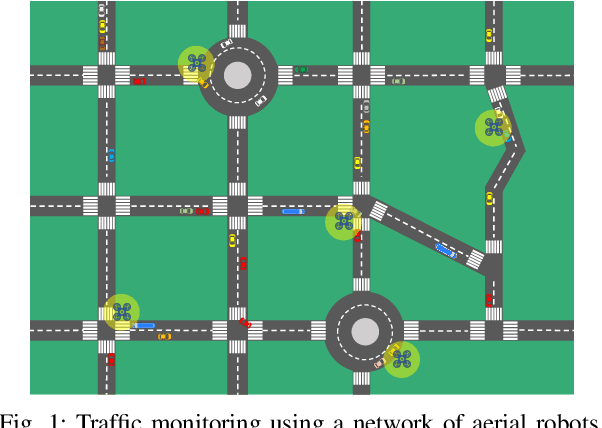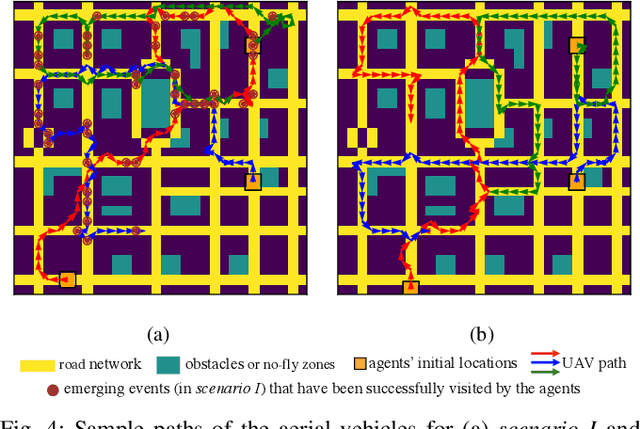Distributed Deep Reinforcement Learning for Intelligent Traffic Monitoring with a Team of Aerial Robots
Paper and Code
Jul 10, 2021



This paper studies the traffic monitoring problem in a road network using a team of aerial robots. The problem is challenging due to two main reasons. First, the traffic events are stochastic, both temporally and spatially. Second, the problem has a non-homogeneous structure as the traffic events arrive at different locations of the road network at different rates. Accordingly, some locations require more visits by the robots compared to other locations. To address these issues, we define an uncertainty metric for each location of the road network and formulate a path planning problem for the aerial robots to minimize the network's average uncertainty. We express this problem as a partially observable Markov decision process (POMDP) and propose a distributed and scalable algorithm based on deep reinforcement learning to solve it. We consider two different scenarios depending on the communication mode between the agents (aerial robots) and the traffic management center (TMC). The first scenario assumes that the agents continuously communicate with the TMC to send/receive real-time information about the traffic events. Hence, the agents have global and real-time knowledge of the environment. However, in the second scenario, we consider a challenging setting where the observation of the aerial robots is partial and limited to their sensing ranges. Moreover, in contrast to the first scenario, the information exchange between the aerial robots and the TMC is restricted to specific time instances. We evaluate the performance of our proposed algorithm in both scenarios for a real road network topology and demonstrate its functionality in a traffic monitoring system.
 Add to Chrome
Add to Chrome Add to Firefox
Add to Firefox Add to Edge
Add to Edge